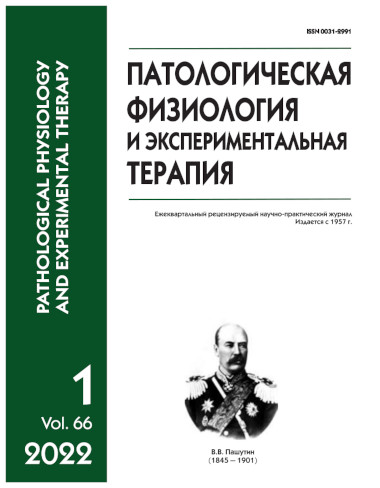Genetic profile of patients with chronic hepatitis C
Abstract
Introduction. Chronic hepatitis C (CHC) is a multifactorial disease. In its formation, the genetic factors of the pathogen (virus) and of the host, as well as the environmental conditions are important. Currently, a public health priority is the assessment of the role of genetic markers in multifactorial diseases. Aim – assessment of the role of genetic markers in chronic hepatitis C. Methods. We examined 95 patients with CHC and 50 healthy subjects. The concentrations of vascular endothelial growth factor (VEGF) and tumor necrosis factor alpha (TNF-α) were measured in blood serum. The enzymatic activities of catalase (CAT), glutathione peroxidase (GPX), and vascular endothelial growth factor (VEGF) were also evaluated. We also studied polymorphism of the VEGFA genes in the -634G/C region, TNF-α in the -308G/A region, CAT in the -262G/A region, GPX4 in the -718C/T region and IL28B in the C/T region, and we assessed the genetic profile in points from 0 to 10 by summing risk alleles. Results. The development of CHC was accompanied by activation of inflammation and neoangiogenesis with an increase in the concentration of both TNF-α (p < 0.001) and VEGF (p < 0.001) along with depletion of antioxidant defense enzymes, and with a decrease in the activity of CAT (p < 0.001) and GPX (p < 0.001). Carriage of the C allele of the VEGFA gene in the -634G/ C region in the form of the CC genotype may be a risk factor for the development of CHC (χ2 = 7.52; p = 0.01). An association of CAT (G262A) and GPX4 (C718T) gene polymorphism with a decrease in the activity of antioxidant enzymes was found. According to their genetic profile, 86% of the healthy subjects had a low risk of developing CHC (0-3 points on the scale), whereas 68% patients with CHC had a low risk. Furthermore, 32% of patients with CHC had a moderate risk (4-7 points), whereas in healthy subjects, this percentage was almost 50% less (14%). Evaluation of the genetic profiles of healthy subjects and of patients with CHC showed that patients with CHC were more likely to have a greater number of risk alleles. Conclusion. Evaluation of the genetic profile using TNF-α in the -308G/A region, CAT in the -262G/A region, GPX4 in the -718C/T region, VEGFA in the -634G/C region and IL28B in the C/T region allows assessment of the risk of the development and the progression of CHC.






